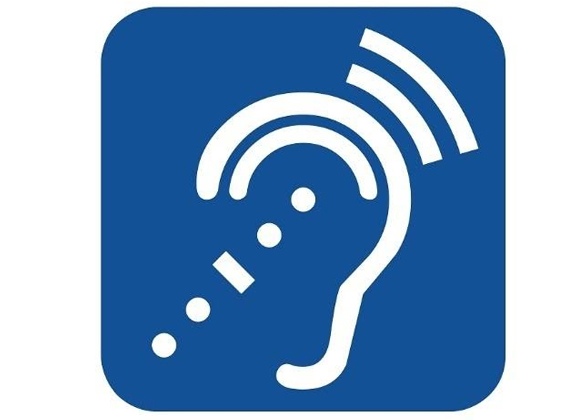- Home
- About Us
- Who We Are
- Why Choose An Audiologist?
- Our Team
- Professional Associations
- Testimonials
- Hearing FAQs
- Services
- Hearing Evaluations
- Hearing Aid Fittings
- Hearing Aid Repair
- Ear Plugs & Protection
- Tinnitus Evaluation
- Auditory Processing Disorder
- Assistive Listening Devices
- Hearing Aids
- Hearing Aid Styles
- Smart Hearing Aids
- Hearing Loss and Brain Health
- Oticon Hearing Aids
- Phonak Hearing Aids
- ReSound Hearing Aids
- Signia Hearing Aids
- Patient Resources
- How the Ear Works
- Types of Hearing Loss
- Patient Forms
- Insurance
- Online Hearing Test
- Blog
- Shop
- Review Us
- East Haven
- Milford
- Contact Us
- Book an Appointment
About Us
Services
Hearing Aids
Patient Resources
Review Us
Assistive Listening Devices (ALDs) are specific tools to help ease the common sources of frustration for people with hearing loss. ALDs are designed to making hearing easier by working directly with phones, televisions, and other electronics. There are also various models that amplify ambient sounds and can often work in conjunction with your hearing aids. Many people used ALDs to make hearing easier at work, on the phone, or in specific environments that need an additional boost.
People with all degrees and types of hearing loss can benefit from assistive listening devices.
You may have certain communication needs that cannot be solved using hearing aids alone. These situations may involve the use of the telephone, radio, television, and the inability to hear the door chime, telephone bell, and alarm clock.
Special devices can make sounds louder. Typically, a hearing aid makes all sounds in the environment louder. Assistive listening devices minimize or eliminate environmental noises.
Assistive Listening Devices Include:
Personal Listening Systems
Designed to carry sound directly to the listener. Includes FM systems and personal amplifiers.
TV Listening Systems
Designed for listening to TV, radio, or stereo without interference from surrounding noise.
Direct Audio Input Hearing Aids
Can be connected to the TV, stereo, tape and/or radio, microphones, auditory trainers, and personal FM devices.
Telephone Amplifying Devices
Telephones that are “hearing aid compatible”.
Musician’s Monitors
Professional musician monitors are designed for live concert sound reinforcement, film and/or video production. They work with any wireless or hardwired receiver for stereo, binaural or monaural sound quality.
Ear Molds: Swim Molds
People who do not want water in their ear canals can have floatable swimmer’s earplugs made of a water resistant material for either shower or swimming use.

Facts On Assistive Listening Devices (ALDs)
- ALDs are “binoculars for the ears” and may benefit many people with residual hearing. They are intended to augment standard public address and audio systems by providing signals that can be received directly by persons with special receivers or their own hearing aids.
- A minority of hearing aid owners concurrently use ALDs. About 1 in 4 consumers use a phone amplifier, while less than 10% of hearing instrument owners are users of ALD devices for enhancing their hearing with TV, at movies, in places of worship, or in conferring.
- ALDs “stretch” the performance of a hearing aid by increasing the signal to noise ratio (SNR). This is significant as SNR must be higher for many people with hearing loss for them to hear speech over background noise ALDs reduce the effect of distance between the person with hearing loss and the sound source; override poor acoustics; and minimize background noise.
- There are hard-wired ALDs and three types of wireless ALDs (audioloop, FM, and Infrared). All three types can be used with or without hearing aids and can be used with an array of receiver attachments for consumers with varying needs and preferences. This includes neck loops, silhouette inductors, headphones, direct audio input and other linkages. Hard-wired ALDs include hand-held amplifiers with microphones, direct audio input microphones, and hard-wired systems.
- Another category of assistive listening device are the self-contained beam-forming microphone arrays. Some may connect with hearing devices via the telecoil or direct audio input.
How ALDs Work For You
Each type of ALD has advantages and disadvantages. The type of ALD appropriate for an application depends on the characteristics of the setting, the nature of the program, and the intended audience.
ALDs may be installed in large areas, portable for personal use, or in the case of FM systems, built into a hearing aid.
ALDs are an example of auxiliary aids and services and reasonable accommodations required by the Americans with Disabilities act (ADA) to be provided by public facilities, state and local governments, and employers, to enable people with hearing loss to participate in their programs and services.
ALDs typically have not been covered by any public or private health insurance plans and are not available in mainstream retail outlets. Most ALDs must be purchased through catalogs of ALD distributors or from some hearing health professionals. Access, availability and therefore awareness of ALDs by consumers is a limiting factor to their acceptance and use.
Other assistive technology that can benefit people with hearing loss include alerting devices, such as special smoke detectors, doorbells, telephone ring signalers, telephones, and alarm clocks. These may produce loud signals, visual signals, or tactile signals. Captioning and CART (Computer Assisted Realtime Transcription) also provide great benefit.
Each type of ALD has its advantages and disadvantages and we’re skilled at walking you through your many options. Contact our office to see if ALDs are right for you.

